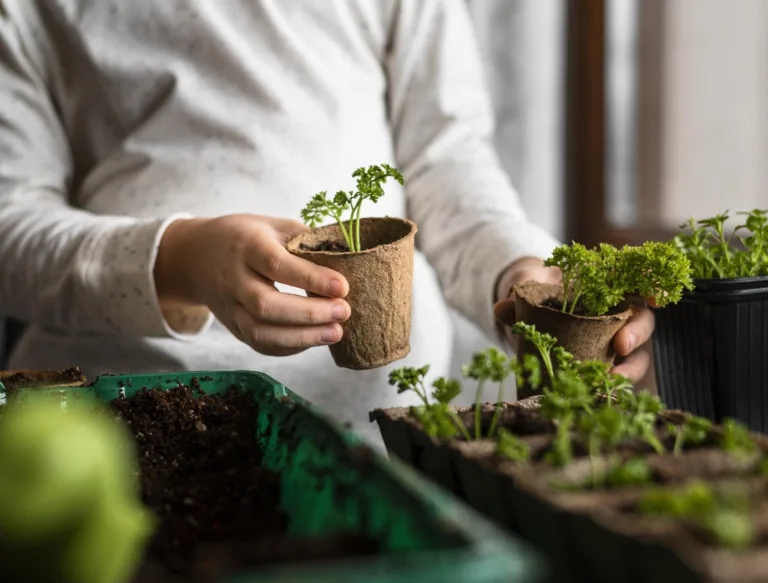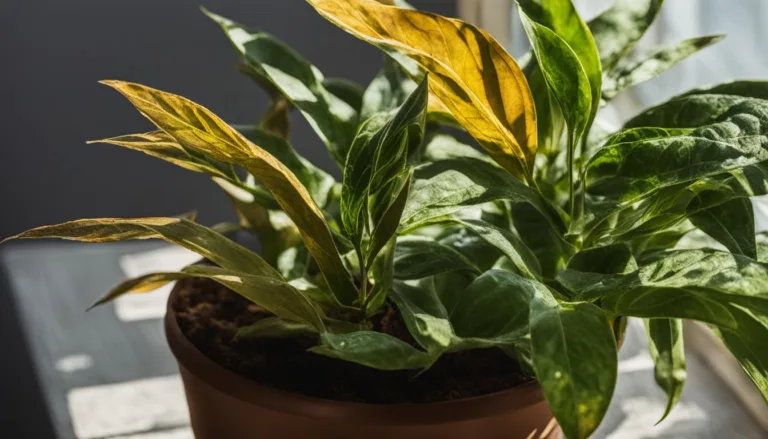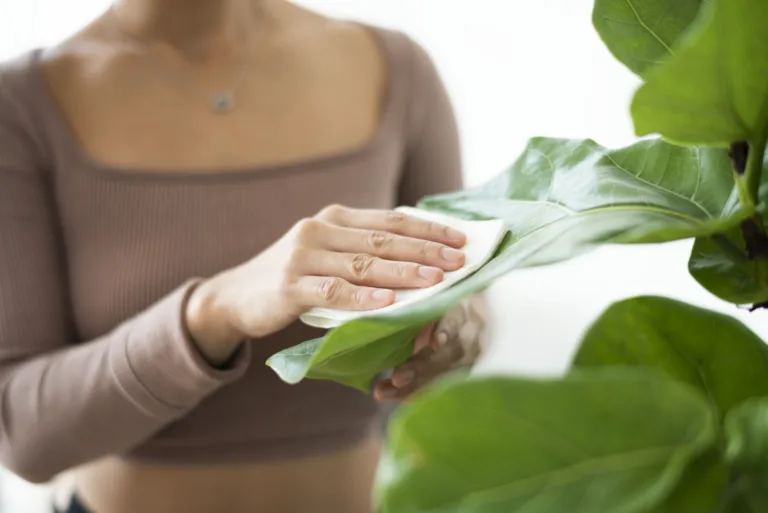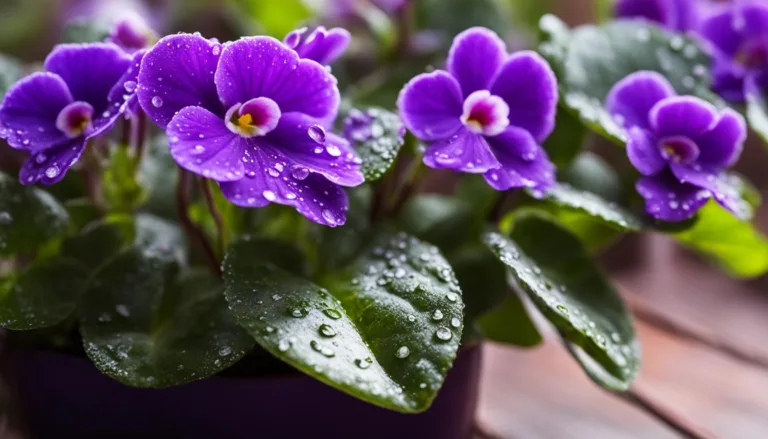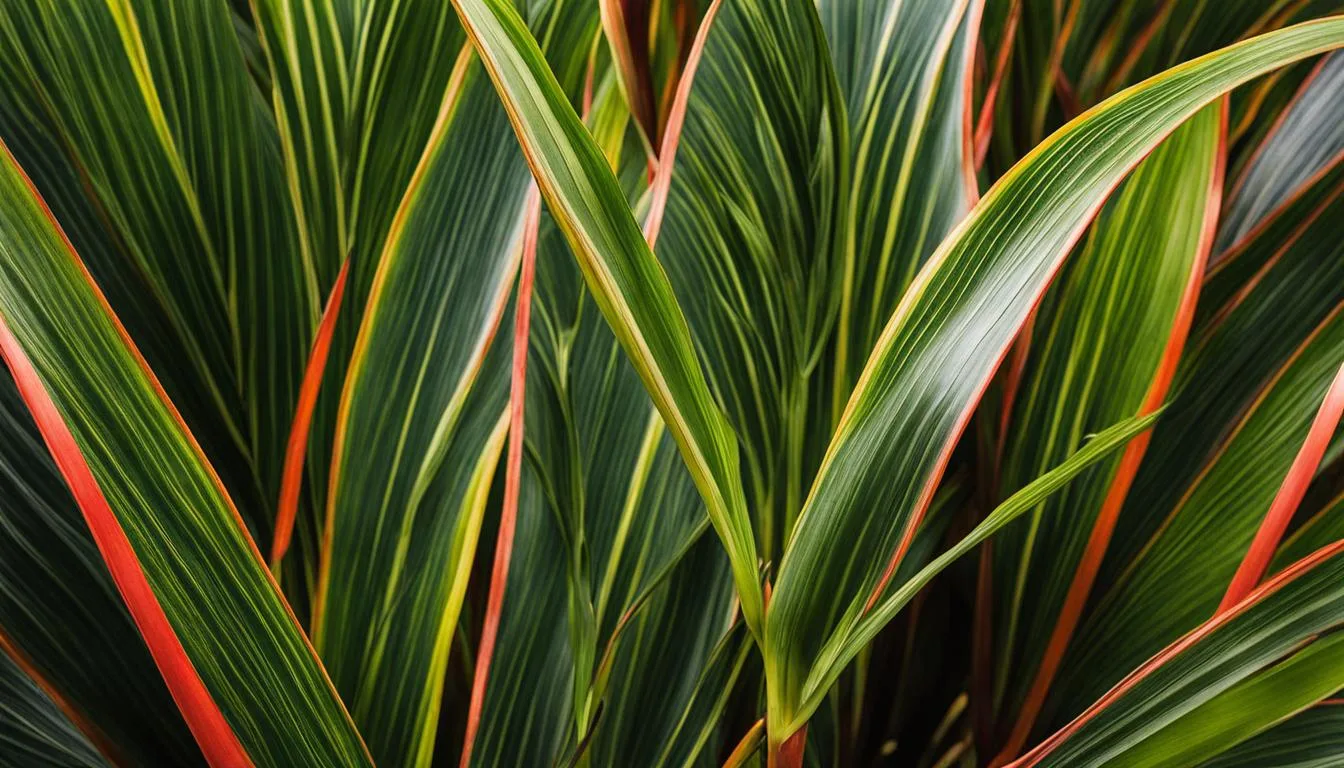
Welcome to my Madagascar Dragon Tree Care Guide! In this article, I will provide you with all the essential information you need to successfully care for your Madagascar Dragon Tree, also known as Dracaena marginata. This stunning plant is native to Madagascar and is a popular choice for indoor gardening due to its attractive sword-like leaves with red edges.
The Madagascar Dragon Tree can grow up to 20 feet tall when planted outdoors, but it is commonly kept pruned to a more manageable height of 6 feet or less as a potted houseplant. However, it’s important to note that this plant is toxic to pets if ingested, so make sure to keep it out of reach of your furry friends.
Now that you have a brief introduction, let’s dive deeper into the care and maintenance of your Madagascar Dragon Tree. By following the tips and guidelines provided in this guide, you’ll be able to keep your plant healthy and thriving for years to come!
Key Takeaways:
- Madagascar Dragon Tree, also known as Dracaena marginata, is an attractive and easy-to-care-for plant native to Madagascar.
- It is commonly grown as a potted houseplant and kept pruned to 6 feet or less.
- The Madagascar Dragon Tree prefers well-draining soil and thrives best in indirect bright light.
- It is drought-tolerant and should be watered when the top half of the soil is dry.
- Common problems include scale insects, mealybugs, and thrips, while brown tips on the leaves may indicate underwatering or excessive sunlight.
Dragon Tree Plant Care and Growth
The Madagascar Dragon Tree, also known as Dracaena marginata, is a versatile and resilient plant that can thrive both indoors and outdoors. With proper care, you can enjoy the beauty of this plant for many years. Here are some essential tips for caring for a Madagascar Dragon Tree:
Light and Temperature
The Dragon Tree plant thrives in bright, indirect light. It can tolerate various light conditions, but it will thrive best when placed in a spot with plenty of bright, indirect light. It’s important to avoid placing the plant in direct sunlight as it can scorch the leaves.
As for temperature, the Madagascar Dragon Tree can adapt to a wide range of temperatures, but it prefers a temperature between 70 and 80 degrees Fahrenheit.
Watering and Soil
When it comes to watering, the Madagascar Dragon Tree prefers regular watering during its growing season, which is typically spring and summer. However, it’s important to allow the top half of the soil to dry out between waterings to prevent over-watering.
This plant is drought-tolerant, so it’s better to underwater than to overwater. As for soil, the Dragon Tree thrives in well-draining soil. A mix of loamy soil and peat moss is recommended for optimal growth.
Propagation and Pruning
The Madagascar Dragon Tree can be easily propagated using stem cuttings. Simply take a healthy stem cutting, remove the lower leaves, and place it in a container with water. After a few weeks, roots will start to form, and you can transfer the cutting to a pot with well-draining soil.
Pruning is also important for maintaining the plant’s size and appearance. Trim back any dead or yellowing leaves, and prune the stems to control the height and shape of the plant.
Madagascar Dragon Tree Care
| Aspect | Care Tips |
|---|---|
| Light | Thrives in bright, indirect light; avoid direct sunlight |
| Temperature | Adapts to a wide temperature range but prefers 70-80°F |
| Watering | Regular watering in the growing season, allowing soil to dry out between waterings |
| Soil | Well-draining soil mix of loamy soil and peat moss |
| Propagation | Easy to propagate with stem cuttings in water |
| Pruning | Trim dead leaves and prune stems to control size and shape |
By following these care tips, you can ensure the health and growth of your Madagascar Dragon Tree. Remember to monitor the plant for any signs of pests or diseases and take appropriate actions to address them. With a little love and attention, your Dragon Tree will thrive and bring beauty to your indoor or outdoor space.
Madagascar Dragon Tree: Sunlight and Soil Requirements
When it comes to providing the right conditions for your Madagascar Dragon Tree, sunlight and soil play crucial roles in its overall health and growth. Understanding the sunlight requirements and choosing the best soil will help ensure the longevity and vibrancy of this beautiful plant.
Sunlight Requirements
The Madagascar Dragon Tree thrives in bright light but can also tolerate partial shade. It is important to avoid placing the plant in direct sunlight as it can burn the foliage.
A great spot for this plant is near a north or east-facing window, where it can receive bright indirect light throughout the day. If your home receives limited natural light, you can supplement it with artificial grow lights to provide the necessary brightness.
Soil Requirements
Choosing the right soil is essential for the Madagascar Dragon Tree’s health and growth. A loose and well-drained potting mix is ideal to prevent waterlogging and root rot. Consider using a mixture of loamy soil and peat moss, which provides good drainage while retaining moisture.
If your plant comes in lava rock, it is recommended to replace it with a suitable potting soil to ensure proper drainage and nutrient availability.
| Sunlight Requirements | Soil Requirements |
|---|---|
| Bright indirect light | Loose and well-drained potting mix |
| Can tolerate partial shade | Mixture of loamy soil and peat moss |
| Avoid direct sunlight | Replace lava rock with potting soil |
By providing your Madagascar Dragon Tree with the right amount of sunlight and suitable soil conditions, you can create a thriving environment for this stunning plant. Remember to place it in a spot with bright indirect light and use a well-drained potting mix to ensure its optimal growth and beauty.
Watering and Humidity Needs of Madagascar Dragon Tree
Proper watering and humidity levels are crucial for the health and well-being of the Madagascar Dragon Tree. To ensure optimal growth, it is important to understand the watering requirements of this plant and how to maintain the right humidity levels.
Watering Tips
The Madagascar Dragon Tree is drought-tolerant, which means it can withstand periods of dryness. However, over-watering can lead to root rot and other issues. To strike the right balance, it is recommended to water the plant when the top half of the soil feels dry to the touch.
This typically translates to watering once every 1-2 weeks, depending on the environmental conditions and the size of your pot.
When watering, it is essential to ensure proper drainage. Make sure your pot has drainage holes to allow excess water to escape. Avoid letting the plant sit in standing water, as this can lead to root rot.
In addition, it is advisable to use distilled or non-fluoridated water, as the Madagascar Dragon Tree can be sensitive to chemicals commonly found in tap water, which can cause leaf discoloration.
Humidity Requirements
The Madagascar Dragon Tree thrives in average household humidity levels, which typically range from 40% to 60%. However, in dry environments or during winter when indoor heating can decrease humidity levels, it may be beneficial to increase humidity around the plant.
One simple way to achieve this is by misting the leaves with water, using a spray bottle, once or twice a week. This mimics the natural conditions of the plant’s native habitat, where humidity levels are higher.
Another method to increase humidity is by placing a tray filled with water near the plant. As the water evaporates, it creates a humid microclimate around the plant. However, be mindful not to let the pot sit directly in the water, as this can lead to over-watering.
| Watering Tips | Humidity Requirements |
|---|---|
| – Water when top half of soil is dry | – Thrives in average household humidity |
| – Use distilled or non-fluoridated water | – Increase humidity in dry environments |
| – Ensure proper drainage | – Mist leaves or use a tray of water |
Temperature and Fertilization for Madagascar Dragon Tree
The temperature plays a crucial role in the health and growth of the Madagascar Dragon Tree. It thrives in temperatures ranging from 70 to 80 degrees Fahrenheit, making it an ideal choice for indoor gardening.
It is important to avoid exposing the plant to extreme temperature fluctuations, as it can lead to stress and damage the foliage. Maintaining a consistent temperature within this range will ensure optimal growth and vitality.
When it comes to fertilization, the Madagascar Dragon Tree does not require frequent or heavy feeding. While it can thrive without regular fertilization, a light feeding with a balanced controlled-release liquid fertilizer in the spring can help boost its growth and overall health. It is important to note that fertilization should be avoided during the winter months when the plant is in its dormancy period.
Suggested Temperature Range for Madagascar Dragon Tree:
| Temperature Range (°F) | Growth and Development |
|---|---|
| 70-80 | Ideal temperature range for optimal growth and vitality |
| Below 60 | Can cause slow growth and potential foliage damage |
| Above 90 | Can lead to stress, wilting, and leaf discoloration |
By providing the Madagascar Dragon Tree with the right temperature conditions and occasional light fertilization, you can ensure that it thrives and adds beauty to your indoor space. Remember to monitor the temperature and avoid exposing the plant to extreme fluctuations. With proper care, your Dragon Tree will flourish and bring joy for years to come.
Common Problems and Pests for Madagascar Dragon Trees
While the Madagascar Dragon Tree is generally disease-resistant, there are a few common problems that you may encounter when caring for this plant. One of the most common issues is infestation by scale insects, mealybugs, and thrips. These pests can cause damage to the foliage and weaken the overall health of the plant.
Mealybugs are easy to identify as they leave small, sticky, cottony deposits on the leaves. They can be controlled by wiping the affected areas with a cotton swab dipped in rubbing alcohol or by using insecticidal soap.
Scale insects, on the other hand, form hard, shell-like coverings on the leaves and stems. To remove scale insects, you can gently scrape them off with a soft brush or cloth. Thrips are tiny, slender insects that can cause small scars on the leaves. Insecticidal soap or horticultural oils can help eliminate thrips.
Another common issue with the Madagascar Dragon Tree is spider mites. These tiny pests thrive in warm and dry environments and can cause discoloration and webbing on the leaves. Regularly misting the plant and wiping the leaves with a damp cloth can help control spider mites. If the infestation is severe, you may need to use an insecticidal soap or miticide to eliminate them.
| Pest | Identification | Treatment |
|---|---|---|
| Mealybugs | Cottony deposits on leaves | Wipe with alcohol or use insecticidal soap |
| Scale insects | Hard, shell-like coverings on leaves and stems | Gently scrape off with a soft brush or cloth |
| Thrips | Small scars on leaves | Use insecticidal soap or horticultural oils |
| Spider mites | Discoloration and webbing on leaves | Mist the plant and wipe leaves with a damp cloth, or use insecticidal soap or miticide |
Lastly, brown tips on the leaves can be a common problem with the Madagascar Dragon Tree. This can be caused by underwatering or excessive exposure to sunlight. To prevent brown tips, make sure to water the plant when the top half of the soil is dry and place it in an area with bright indirect light. Adjusting the watering and light conditions should help resolve this issue.
By being vigilant and addressing these common problems and pests promptly, you can ensure that your Madagascar Dragon Tree thrives and remains a beautiful addition to your indoor or outdoor garden.
Varieties of Madagascar Dragon Tree
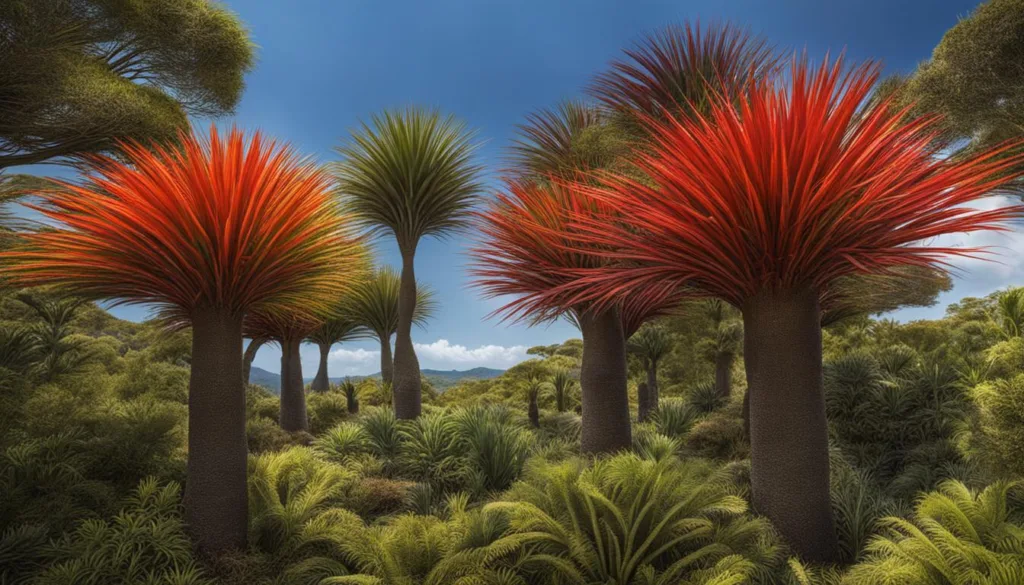
The Madagascar Dragon Tree is a unique and beautiful plant that comes in several striking varieties. Each variety has its own distinct features and can add a touch of color and interest to any indoor garden. Let’s explore some of the most popular Madagascar Dragon Tree varieties:
Dracaena marginata ‘Tricolor’
This variety features dark red margins and a vibrant green center, creating a striking contrast. The combination of colors adds depth and visual appeal to the plant. The ‘Tricolor’ variety is a favorite among plant enthusiasts looking to add a touch of drama to their indoor spaces.
Dracaena marginata ‘Colorama’
The ‘Colorama’ variety is known for its pink variegated leaves, which feature beautiful white and green stripes. This variety brings a pop of color and elegance to any room. The ‘Colorama’ Dragon Tree is a stunning addition to any plant collection and is sure to be a conversation starter.
Dracaena marginata ‘Bicolor’
If you’re looking for a unique and eye-catching Dragon Tree variety, the ‘Bicolor’ is a fantastic choice. This variety showcases leaves with red and green stripes, creating a captivating contrast. The ‘Bicolor’ Dragon Tree is a statement plant that adds a contemporary touch to any home or office.
| Variety | Leaf Colors |
|---|---|
| Dracaena marginata ‘Tricolor’ | Dark red margins, green center |
| Dracaena marginata ‘Colorama’ | Pink variegated leaves with white and green stripes |
| Dracaena marginata ‘Bicolor’ | Red and green stripes |
These varieties of the Madagascar Dragon Tree offer a range of colors and patterns, allowing you to find the perfect one to suit your personal style and décor. Whether you prefer bold and vibrant or subtle and elegant, there is a Dragon Tree variety to meet your preferences. Experimenting with different varieties can be a fun way to add visual interest and diversity to your indoor garden.
With their stunning foliage and easy care requirements, Madagascar Dragon Trees are an excellent choice for both experienced and beginner plant lovers. Their unique varieties not only add beauty to any space but also showcase the versatility and adaptability of this remarkable plant species.
Pruning and Propagating Madagascar Dragon Tree
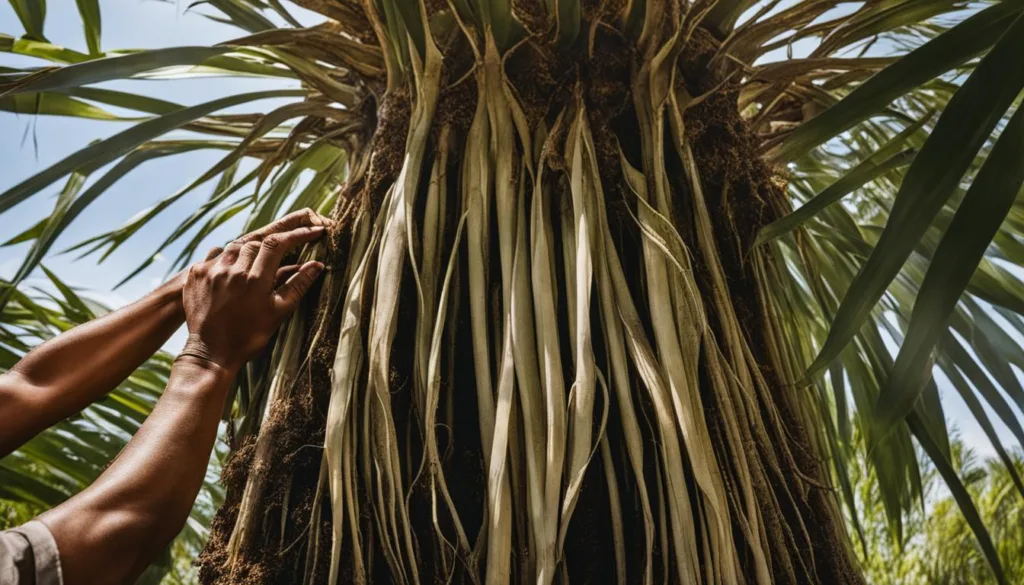
Pruning the Madagascar Dragon Tree is an essential part of its care routine to maintain its appearance and keep it healthy. Regular pruning helps remove dead or yellowing leaves, promotes new growth, and keeps the plant tidy.
To prune the Dragon Tree, use clean and sharp pruning shears or scissors. Begin by cutting back any dead or unsightly foliage close to the main stem. Be careful not to remove too many leaves at once, as this can stress the plant.
Propagation is another way to expand your collection of Madagascar Dragon Trees or share the plant with friends and family. Stem cuttings are the most commonly used method for propagating the Dragon Tree. Cut a healthy stem about 6 inches long, making sure it has at least two nodes.
Remove the lower leaves, leaving only a few at the top. Place the cutting in a glass of water, making sure the nodes are submerged. Change the water every few days to prevent bacterial growth. After a few weeks, roots will begin to develop. Once the roots are about an inch long, it’s time to transfer the cutting to a pot with well-draining soil.
Propagating Madagascar Dragon Tree from Stem Cuttings – Step-by-Step Guide:
- Select a healthy stem with at least two nodes.
- Remove the lower leaves, leaving a few at the top.
- Place the cutting in a glass of water, ensuring the nodes are submerged.
- Change the water every few days to prevent bacterial growth.
- After a few weeks, roots will start to develop.
- Once the roots are approximately an inch long, transfer the cutting to a pot with well-draining soil.
Remember to provide the newly propagated Dragon Tree with the same care and conditions as a mature plant. With proper pruning and propagation techniques, you can easily maintain and expand your collection of beautiful Madagascar Dragon Trees.
Care Tips and Troubleshooting for Madagascar Dragon Tree
When it comes to caring for your Madagascar Dragon Tree, there are a few key tips to keep in mind. First and foremost, providing the right amount of light is crucial. This plant thrives in bright indirect light, so placing it near a window where it can receive filtered sunlight is ideal. Avoid direct sunlight as it can scorch the leaves.
Next, proper watering is essential. The Madagascar Dragon Tree is drought-tolerant, so it’s important to let the soil dry out between waterings. Check the top half of the soil and only water when it feels dry to the touch. Overwatering can cause root rot and other issues, so be mindful of the watering schedule.
In addition to light and watering, regular pruning is necessary to maintain the plant’s appearance and health. Remove any dead or yellowing leaves and trim back overgrown stems to encourage new growth. This will help keep your Madagascar Dragon Tree looking neat and tidy.
Lastly, it’s important to keep an eye out for any signs of pests or diseases. Common issues include scale insects, mealybugs, and thrips. If you notice any unusual spots, discoloration, or pests on your plant, take action immediately. Treatments such as insecticides or mild soap and water solutions can help control these problems.
| Care Tips for Madagascar Dragon Tree | |
|---|---|
| Light | Bright indirect light |
| Watering | Allow soil to dry out between waterings |
| Pruning | Remove dead leaves and trim back overgrown stems |
| Pest Control | Monitor for pests and treat as needed |
By following these care tips and troubleshooting guidelines, you can ensure that your Madagascar Dragon Tree thrives and remains a beautiful addition to your indoor space.
Remember to provide the right amount of light, water appropriately, prune regularly, and address any potential pest or disease issues promptly. With the proper care and attention, your Dragon Tree will continue to impress with its vibrant foliage and unique appearance.
The Madagascar Dragon Tree is a stunning and low-maintenance plant that can thrive in various light conditions. With its green sword-like leaves and red edges, it adds beauty and elegance to any indoor or outdoor space.
By following the care tips and guidelines mentioned in this Madagascar Dragon Tree Care Guide, you can ensure the longevity and health of your plant. Providing it with bright indirect light, well-draining soil, and a watering schedule that allows the soil to dry out between waterings is essential. Regular pruning and monitoring for pests and diseases will help maintain its appearance and overall well-being.
Whether you’re an experienced gardener or a novice, the Madagascar Dragon Tree is a great choice. Its tolerance for various light conditions and its drought-tolerant nature make it an easy-to-care-for plant. So go ahead, bring this beautiful plant into your home or garden, and enjoy the striking beauty it brings for years to come!
FAQ
Is the Madagascar Dragon Tree toxic to pets?
Yes, the Madagascar Dragon Tree is toxic to pets if ingested.
What is the ideal lighting condition for the Madagascar Dragon Tree?
The Madagascar Dragon Tree thrives in indirect bright light but can also tolerate partial shade. It should be avoided placing the plant in direct sunlight as it can burn the foliage.
What type of soil is best for the Madagascar Dragon Tree?
A loose and well-drained potting mix, such as a mix of loamy soil and peat moss, is ideal for the Madagascar Dragon Tree. If the plant comes in lava rock, it should be replaced with potting soil.
How often should I water the Madagascar Dragon Tree?
It is recommended to wait until the top half of the soil is dry before watering the Madagascar Dragon Tree. Over-watering can cause the plant’s leaves to develop brown tips.
What is the ideal temperature range for the Madagascar Dragon Tree?
The Madagascar Dragon Tree prefers temperatures between 70 and 80 degrees Fahrenheit.
How can I propagate the Madagascar Dragon Tree?
The Madagascar Dragon Tree can be easily propagated using stem cuttings rooted in water and transferred to potting soil. Rooting hormones are not necessary for successful propagation.
What are the common problems and pests for the Madagascar Dragon Tree?
The Madagascar Dragon Tree can be susceptible to scale insects, mealybugs, thrips, and spider mites. Regular monitoring and treatment with insecticides can help control these pests.
What are the varieties of the Madagascar Dragon Tree?
The most commonly found varieties of the Madagascar Dragon Tree include Dracaena marginata ‘Tricolor’, Dracaena marginata ‘Colorama’, and Dracaena marginata ‘Bicolor’.
How should I prune the Madagascar Dragon Tree?
Pruning the Madagascar Dragon Tree is important for maintaining its appearance. Dead leaves can be removed, and stems can be cut back to keep the plant tidy.
How do I care for the Madagascar Dragon Tree?
To care for the Madagascar Dragon Tree, provide it with bright indirect light, well-draining soil, and a watering schedule that allows the soil to dry out between waterings. Monitor the plant for signs of pests and diseases, and prune as needed.

